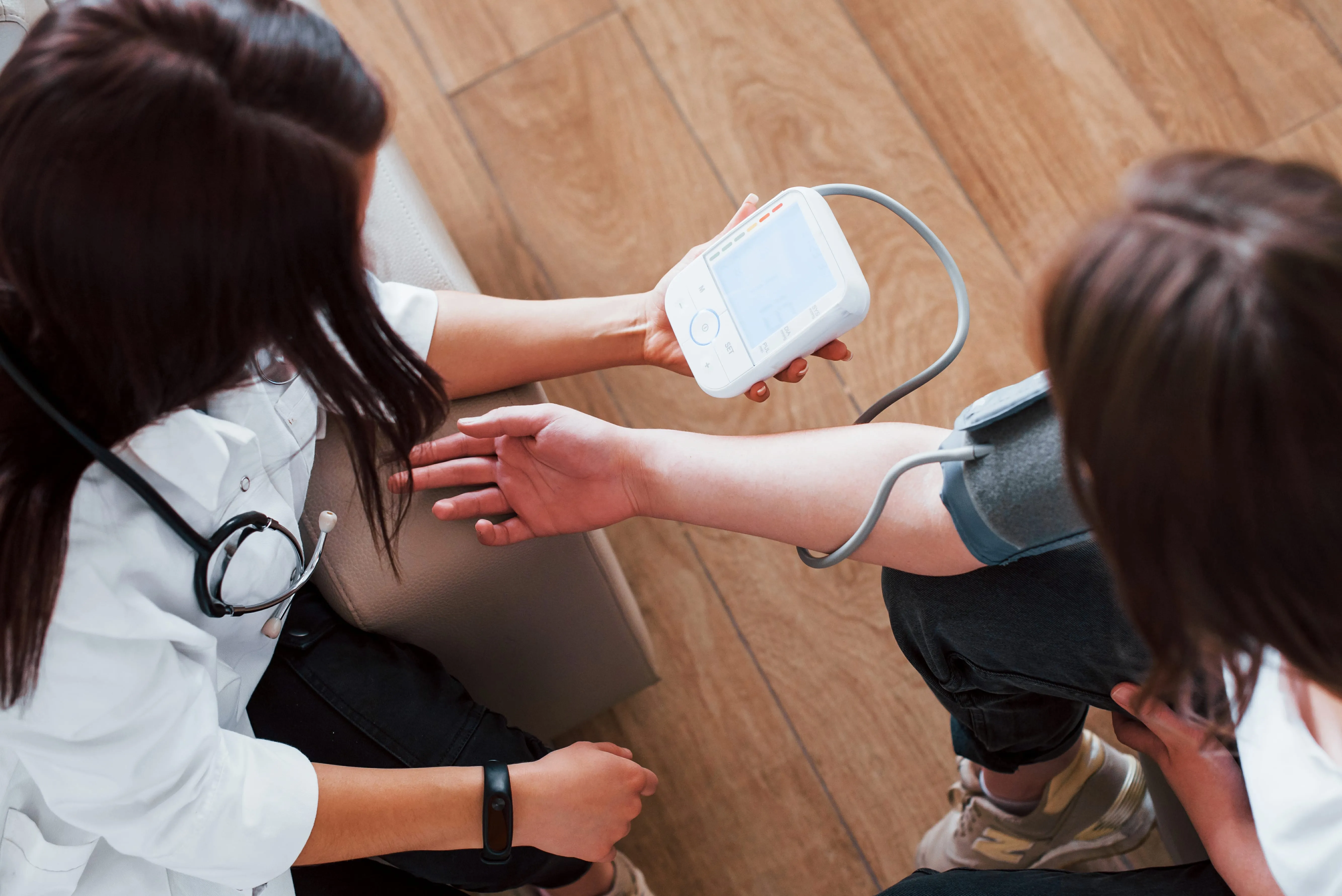Key Takeaways
- Early signs of obesity, like high BMI or waist size, can strongly predict adult cardiometabolic disease risk.
- Most children on a high BMI path stay on it into adulthood, making early detection and intervention critical.
- Parents can make a big impact through consistent monitoring, healthy routines, and involving kids in lifestyle changes.
{{mid-cta}}
For some kids, childhood obesity isn’t just a phase they grow out of. Increasingly, researchers are discovering that early signs of excess weight, such as a high body mass index (BMI) and a high waist-to-height ratio, aren’t merely temporary health issues. These markers are strong predictors of future cardiometabolic disease, including type 2 diabetes, hypertension, and cardiovascular disease.
Findings from the 2025 European Congress on Obesity (ECO 2025) add even more urgency, showing just how strong the link is between pediatric obesity markers and adult cardiometabolic disease.
The takeaway: If we ignore early signs of excess adiposity, we may be setting the stage for a lifetime of chronic illness.
Understanding Early Obesity Markers
Childhood obesity affects millions worldwide and is on the rise. The World Health Organization (WHO) reports that 35 million children under the age of 5 were overweight or obese in 2024. And nearly 400 million children and adolescents, 5 to 19 years of age, were living with overweight and obesity in 2022.1
But what exactly do we mean by "early obesity markers"?
Definition of Key Markers
- Body Mass Index (BMI): This is a standardized measure of body fat based on height and weight. In children, BMI percentiles are used to account for age and sex. It only accounts for height and weight, so it's far from a perfect measure of body composition, but it's still used as a large-scale screening tool.
- Waist-to-Height Ratio: This metric highlights fat distribution, particularly central adiposity, which is more strongly linked to cardiovascular risk factors than overall body fat.
Importance of Early Detection
A high BMI or waist-to-height ratio in childhood can be a red flag for future health problems.
So while these metrics aren't perfect, they serve as tools to identify children who may be at higher risk for developing metabolic syndrome, diabetes mellitus, or other obesity-related conditions.
Studies have shown that elevated BMI or a high waist-to-height ratio in adolescents can be a strong predictor of adult cardiometabolic risk factors, including type 2 diabetes, atherosclerosis, and cardiovascular disease (CVD). Longitudinal studies show that these early signs can track into adulthood, increasing the risk of cardiovascular disease, dyslipidemia, and insulin resistance. 2
Early detection enables timely interventions, including adjustments to nutrition and physical activity, as well as clinical monitoring, which can significantly reduce the risk of problems down the line.
Recent Findings from ECO 2025

The 32nd European Congress on Obesity (ECO 2025) highlighted breakthrough research on the long-term effects of childhood obesity.
One cohort study presented at the conference followed 3,528 children from early childhood into early adulthood, tracking their BMI and how it predicted the development of overweight or obesity by age 18. Here’s what they found.
Among kids with overweight or obesity:
- 32.5% at age 2 remained so at 18
- 51.6% at age 6
- 44.6% at age 10
- 56.1% at age 14
This indicates that risk increases with age, particularly when overweight persists into adolescence.
Higher BMI at ages 2, 6, 10, and 14 all independently increased the odds of being overweight or obese at 18, but age 6 was the strongest predictor. What's more, the highest adult obesity rates were found in kids who had consistently high BMI from ages 10 to 14, regardless of growth patterns. 3
This supports earlier work published in The Lancet, which showed similar trajectories of weight gain and adiposity tracking from childhood to young adulthood. The research suggests that older children's BMI tends to stabilize and reflect their adult weight, while younger children's BMI is more likely to fluctuate as they grow through adolescence. 4
Another eye-opening study was the COPSAC 2010 study, which tracked 700 children from infancy. It tracked levels of C-reactive protein (CRP), a marker of inflammation, from pregnancy through childhood. The study suggests that low-grade inflammation is linked to obesity from childhood. Research also shows that children with unfavorable waist-to-height ratio trajectories (and higher central adiposity) have elevated blood pressure, higher triglyceride levels, and lower HDL (high-density lipoprotein cholesterol) levels by age 10. These are all key components of metabolic syndrome and early signs of future cardiometabolic disease.
These studies underscore a crucial point: obesity-related biomarkers in early childhood carry real, measurable consequences by the time kids reach middle school, long before “adulthood” even begins. 5 6
4 Mechanisms Linking Early Obesity to Adult Cardiometabolic Disease

So, how does extra weight in childhood translate into major health problems decades later? It ultimately comes down to metabolic issues triggered by excess body fat.
Insulin Resistance
Adipose tissue, especially visceral fat, can interfere with the body's insulin utilization. Over time, this leads to insulin resistance, a hallmark of type 2 diabetes. Even in children with a normal weight, increased belly fat can cause insulin levels to rise. 7
Inflammation
Fat tissue isn’t inert. It’s metabolically active and often triggers the release of inflammatory molecules, such as C-reactive protein. Chronic, low-grade inflammation damages blood vessels and contributes to the development of atherosclerosis, thereby increasing the risk of coronary heart disease.
Dyslipidemia
Childhood obesity is frequently associated with dyslipidemia, characterized by unhealthy levels of total cholesterol, LDL (low-density lipoprotein), and triglycerides, as well as low HDL cholesterol. These lipid issues raise cardiovascular disease risk significantly and often persist into young adulthood. Atherosclerosis (the buildup of plaque in the arteries) often begins in childhood. In fact, lipid disorders affect 1 in 5 young adults, and 42% of those with obesity. Still, most cases go undiagnosed due to a lack of symptoms. 8
Blood Pressure
Children with obesity are more likely to develop high systolic and diastolic blood pressure, which can evolve into full-blown hypertension. That's a major risk factor for stroke and cardiovascular events in adulthood and cause-specific mortality later in life.
Importance of Early Intervention

Here's the good news: Early intervention works. Identifying and managing obesity in early childhood can significantly alter a child's health trajectory. When caught early, the negative trajectories of childhood obesity can be reversed (or at least slowed) before they lead to serious illness.
Regular Monitoring
Routine screening for BMI and waist-to-height ratio starting in early childhood allows healthcare providers to detect at-risk children sooner. Research consistently suggests that consistent monitoring leads to more effective interventions.
Routine check-ins can help spot patterns early. So if you're a caregiver, keep an eye on your child’s BMI percentile and waist size, especially during growth spurts. Also, be sure to ask your pediatrician to monitor your glucose levels and have the doctor explain these numbers and how they relate to your long-term health.
Lifestyle Modifications
Simple, sustainable lifestyle changes, like improved nutrition, reduced screen time, and increased physical activity, can all help. A systematic review found that family-based interventions significantly improved body mass index (BMI) and metabolic markers in children. The study found that combining goal-setting with positive reinforcement can help boost physical activity. The research also suggests that interventions should support the family environment and empower the child to take the lead in making healthy changes. 9
Aim to make physical activity a part of everyday life; consider activities like bike rides, family walks, or scheduling dance breaks in the kitchen. You'll also want to consider how you structure your meals. Aim for more fruits, vegetables, lean proteins, and fewer sugary drinks. Also, avoid using food as a reward or punishment; instead, link it to nourishment over emotion.
Educational Initiatives
Knowledge is power, especially when it comes to your child’s health. Parents and caregivers often aren’t informed about how early weight patterns can influence long-term outcomes, making awareness the first step. Schools, pediatricians, and community programs can play a big role by offering clear, practical guidance on nutrition, physical activity, and screen time. Even brief workshops or handouts during doctor visits can help families make more informed day-to-day choices. The more support and education parents receive, the easier it is to build a healthy foundation at home.
The Bottom Line
Research consistently shows that childhood obesity is a warning sign. Early obesity markers like BMI and waist-to-height ratio can predict adult cardiometabolic disease. But with early detection, education, and simple interventions, we can change the story. Healthcare providers, parents, and communities all play a role in reversing these trends and promoting long-term health for the next generation.
Learn More With Signos’ Expert Advice
Signos offers science-backed guidance and insights to support building healthier habits. Discover more about glucose levels and their impact on health on the Signos blog.
Topics discussed in this article:
References
- https://www.who.int/news-room/fact-sheets/detail/obesity-and-overweight
- https://pmc.ncbi.nlm.nih.gov/articles/PMC3263181/
- https://karger.com/ofa/article-pdf/doi/10.1159/000545547/4375755/000545547.pdf
- https://www.thelancet.com/journals/eclinm/article/PIIS2589-5370(22)00170-5/fulltext
- https://www.eurekalert.org/news-releases/1083306
- https://www.sciencedirect.com/science/article/pii/S0091674922025015
- https://pmc.ncbi.nlm.nih.gov/articles/PMC9052009/
- https://www.ncbi.nlm.nih.gov/books/NBK585106/
- https://onlinelibrary.wiley.com/doi/10.1111/obr.12493




.svg)










.svg)
.svg)
.svg)
.svg)
.svg)
.svg)
.svg)
